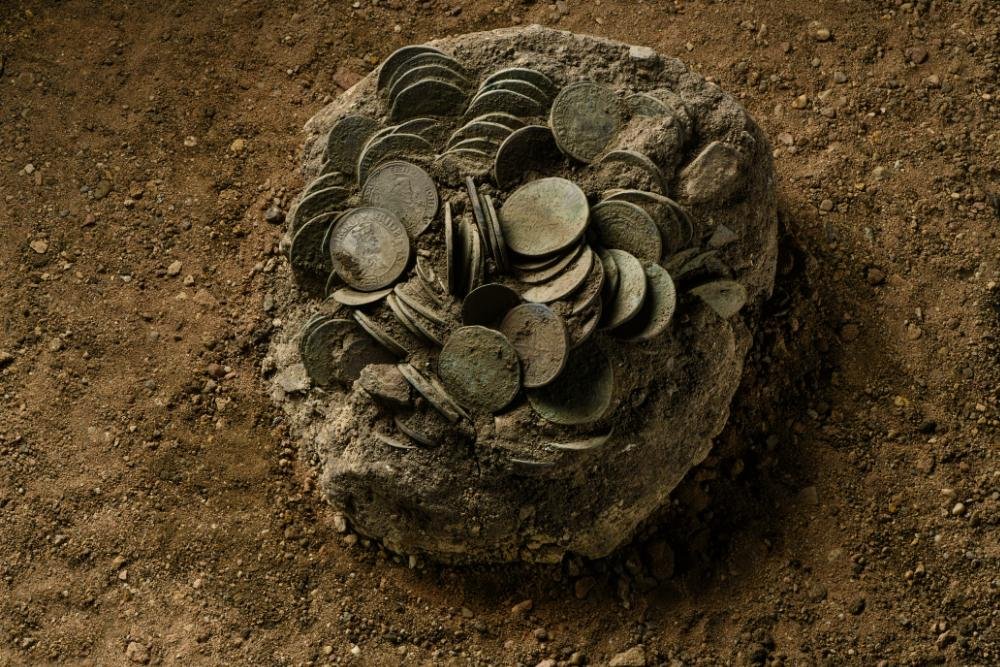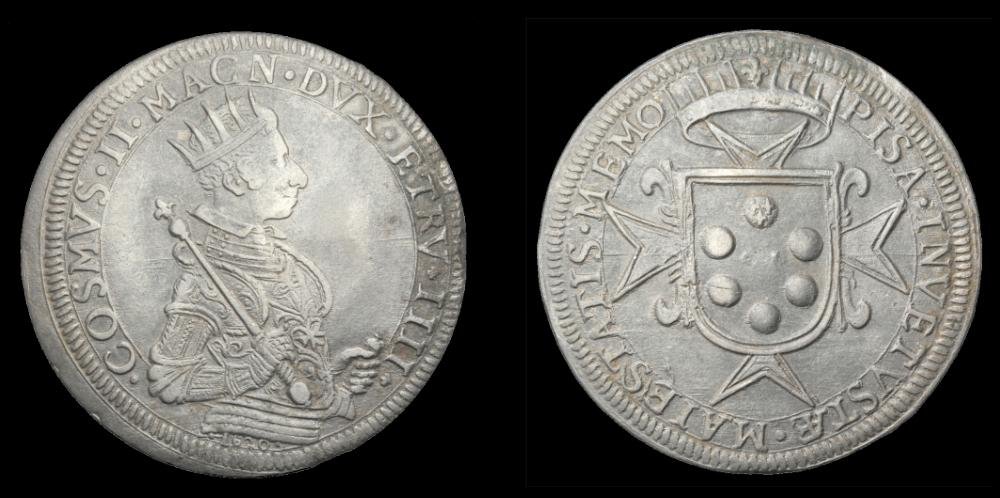During construction work at a farmstead in the town of Wettin, Germany, archaeologists from the State Office for Monument Preservation and Archaeology Saxony-Anhalt (LDA) discovered a hoard of 285 silver coins dating back to the 17th century.
 The coin hoard recovered in a block. Credit: State Office for Heritage Management and Archaeology Saxony-Anhalt, Juraj Lipták
The coin hoard recovered in a block. Credit: State Office for Heritage Management and Archaeology Saxony-Anhalt, Juraj Lipták
The farmstead, managed by the Altstadt Wettin e.V. since 2018, is a significant historic structure in the heart of Wettin. Constructed in the late 16th or early 17th century, the building is one of the oldest surviving secular buildings in the town. It has served various purposes over the centuries, notably housing the town’s pharmacy from 1681, as evidenced by remnants of an 18th-century Baroque stucco ceiling and an Apotheke vault.
The property was under threat of demolition due to modern development pressures. However, its preservation was secured thanks to the efforts of Altstadt Wettin e.V. The organization aims to restore the building in close coordination with monument protection authorities.
The coin hoard was found approximately 50 centimeters below the ground level at the gate area leading to the central courtyard of the farmstead. The coins were discovered in a highly compacted state, suggesting they were once stored in an organic container, such as a bag, which has since decomposed. Dr. Claudia Beuger, an archaeologist and ᴀssociation member, oversaw the on-site documentation of the discovery. The coins were meticulously uncovered, cataloged, and treated at the restoration workshop of the State Office for Heritage Management and Archaeology Saxony-Anhalt (LDA).
 Tallero minted for Cosimo II de’ Medici (reign 1609 to 1621) in 1620. Credit: State Office for Heritage Management and Archaeology Saxony-Anhalt, Anika Tauschensky
Tallero minted for Cosimo II de’ Medici (reign 1609 to 1621) in 1620. Credit: State Office for Heritage Management and Archaeology Saxony-Anhalt, Anika Tauschensky
The hoard consists predominantly of large-format silver coins, including thalers and groschen. The oldest coin in the collection dates back to 1499, while the most recent was minted in 1652. The majority of the coins are regional Saxon mintages, including the Schreckenberg groschen and Albertus thalers minted in the Spanish Netherlands. These coins highlight the extensive trade connections of the period, as they include mintages from various German states, Austria, the Netherlands, Switzerland, and even Italy.
Dr. Oliver Dietrich of the LDA stated: “It’s difficult to determine the former purchasing power, but the hoard of high silver-content coins certainly represented a considerable value.” The treasure likely corresponded to the earnings a master craftsman would have made over ten years, equating to around 500,000 euros today.
Notably, the hoard includes several rare coins seldom found in Saxony-Anhalt. Among these is an Italian scudo of Odoardo Farnese from 1630 and a tallero minted by Cosimo II de’ Medici in 1620.
The presence of these coins suggests that the hoard may have belonged to a merchant or merchant family involved in long-distance trade. Historical records suggest that Johann Dondorf, a prominent merchant and former mayor of Wettin, could be the likely owner of the hoard. Dondorf, who lived in the house during the time of the coins’ deposition, was known for his substantial wealth, derived from agriculture, viticulture, and brewing.
The coins’ concealment likely occurred shortly after the end of the Thirty Years’ War (1618-1648), a tumultuous period that saw a significant economic and social upheaval in the region.





